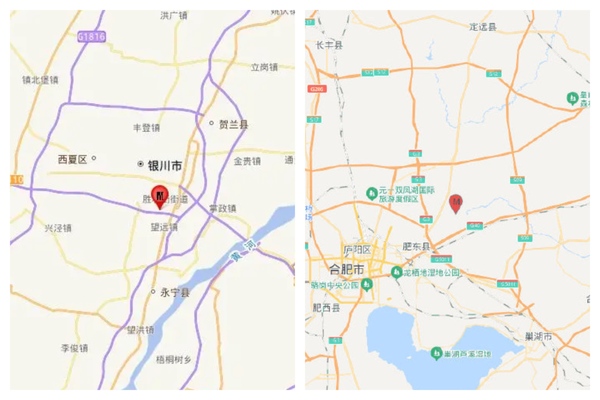On the evening of September 25th, earthquakes struck Yinchuan, Ningxia and Feidong County, Anhui. Feidong County has already experienced five earthquakes this year.
China Earthquake Administration officially determined that at 18:15 on September 25th, a magnitude 3.3 earthquake hit Jinfeng District of Yinchuan City, Ningxia (latitude 38.41 degrees, longitude 106.26 degrees) with a depth of 10 kilometers.
According to the preliminary report from China Earthquake Administration, within a radius of 200 kilometers around the epicenter, there have been a total of 17 earthquakes of magnitude 3 or higher in the past five years, with the largest one being a 4.9 magnitude earthquake that occurred in Pingchuan District of Baiyin City, Gansu on December 31, 2023 (217 kilometers away from the epicenter of this earthquake).
Just over an hour later, Feidong County, Anhui experienced an earthquake as well.
China Earthquake Administration officially determined that at 19:29 on September 25th, a magnitude 3.8 earthquake struck Feidong County, Hefei City, Anhui (latitude 32.00 degrees, longitude 117.61 degrees) with a depth of 12 kilometers.
This is the fifth earthquake to hit Feidong County this year. The details of the previous 4 earthquakes that occurred are as follows:
– On September 18th at 20:08, a 4.7 magnitude earthquake struck Feidong County, Hefei City, Anhui (latitude 31.98 degrees, longitude 117.60 degrees) with a depth of 12 kilometers.
– On September 14th at 05:12, a 3.9 magnitude earthquake occurred with a depth of 10 kilometers, still located in Liangyuan Town.
– On May 12th at 02:32, Liangyuan Town experienced another 3.1 magnitude earthquake with a depth of 15 kilometers.
– On February 24th at 18:13, a 3.5 magnitude earthquake hit Feidong County with a depth of 15 kilometers, the epicenter was in Liangyuan Town.
These consecutive earthquakes in both regions have raised concerns among residents and authorities regarding the seismic activity and preparedness in these areas. The frequency of earthquakes highlights the importance of monitoring and response mechanisms to ensure the safety and well-being of the affected communities.

